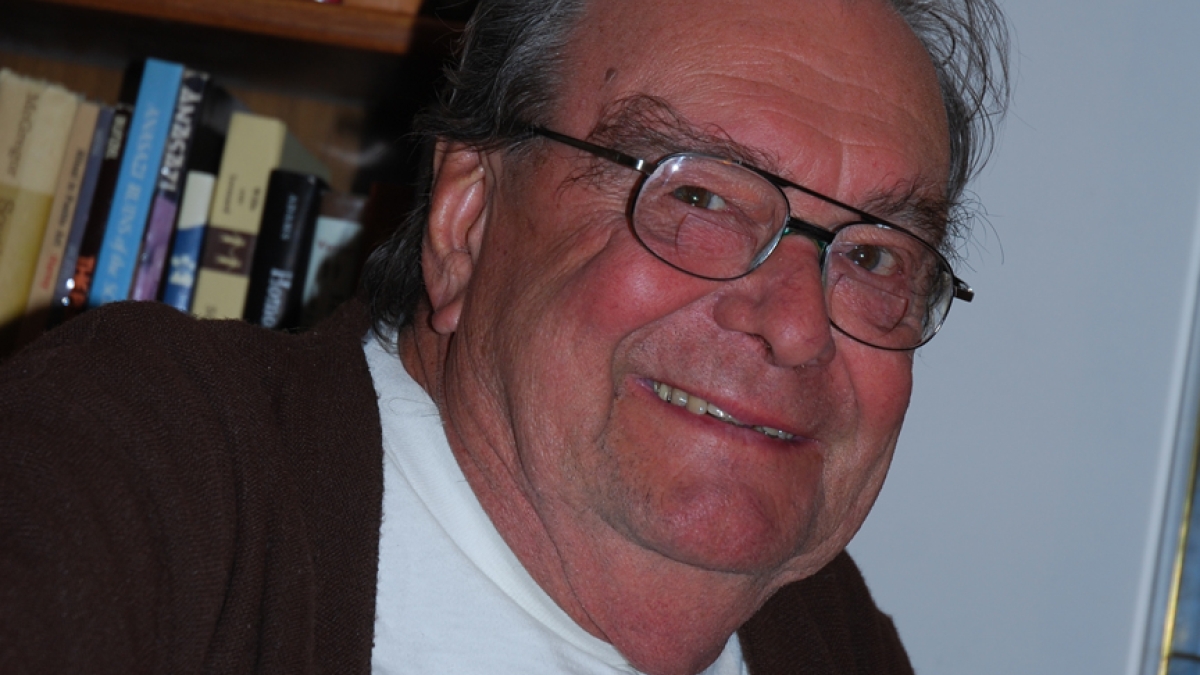In memory: Influential anthropologist Christy G. Turner II

Regents’ Professor Emeritus Christy G. Turner II passed away on July 27 in his Tempe, Ariz. home. He was 79.
A driving force in the realm of dental anthropology, Turner was a prolific and influential researcher for more than 40 years.
His broad interests spanned the world and all four fields of anthropology: physical anthropology, archaeology, linguistics and sociocultural anthropology. His fieldwork ranged from exploring the interaction between humans and animals in Ice Age Siberia to taking dental casts of indigenous peoples in the Aleutian Islands.
Along with his prominent dental anthropology work, Turner was particularly known for his ground-breaking research into understanding the peopling of the world and perimortem taphonomy.
His contributions to the latter area, namely his assertion that ancestral Puebloans practiced cannibalism, engendered controversy as well as acclaim.
With his late wife, Jacqueline Adams Turner, he published the seminal book on the subject, “Man Corn: Cannibalism and Violence in the Prehistoric American Southwest.” Ultimately, their work helped establish criteria for identification of cannibalized remains.
Born in Columbia, Mo., Turner earned a doctorate from the University of Wisconsin before beginning his career at the Museum of Northern Arizona.
In 1966, Turner came to the Arizona State University Department of Anthropology as an assistant professor. He saw the department transform into the School of Human Evolution and Social Change in the College of Liberal Arts and Sciences around the time he retired from the classroom but remained active in research.
Turner served as the associate dean of the ASU Graduate College from 1971 to 1977. In 1984, he received the Graduate College Distinguished Professor Award.
Turner played a pivotal role in establishing ASU as a leader in dental anthropology research and study. Aided by Richard Scott, his graduate student at the time – now the chair of anthropology at the University of Nevada, Reno – he created the ASU Dental Anthropology System. The ASUDAS, which refined and built on plaques developed by the “father of dental anthropology,” Al Dahlberg, standardized recording of dental features used to assess biological affinities among populations. It has become widely used and cited by researchers around the world.
In March of this year, a festschrift titled, “Anthropological Perspectives on Tooth Morphology: Genetics, Evolution and Variation” was edited by Scott and another former graduate student of Turner’s, Joel Irish, professor of anthropology at Liverpool John Moores University. Of the 21 papers in the final volume, six were produced by Turner’s former students.
Turner’s last publication, due later this year – written with his wife Olga V. Pavlova and Nicolai D. Ovodov – is “Animal Teeth and Human Tools: A Taphonomic Odyssey in Ice Age Siberia.”
A memorial service for Turner is being planned for the fall with a private interment at Benson, Ariz.
In the wake of his passing, colleagues and former students have come forward with remembrances of the man they recall as charismatic, intensely passionate, irascible, far-sighted and one of a kind.
For more on Turner’s influence and legacy, see the tribute page on the School of Human Evolution and Social Change website.
Also, see the memorial article published in the Arizona Republic, August 5, 2013.

